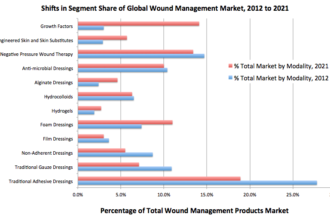 Have you noticed the recent wave of TV commercials for one-to-one video calling (Apple Facetime), or multiple participation (GoToMeeting) video collaboration, or one-to-many webcasting?
Have you noticed the recent wave of TV commercials for one-to-one video calling (Apple Facetime), or multiple participation (GoToMeeting) video collaboration, or one-to-many webcasting?
 Have you noticed the recent wave of TV commercials for one-to-one video calling (Apple Facetime), or multiple participation (GoToMeeting) video collaboration, or one-to-many webcasting? In business, it’s all as close, convenient and immediate as your smart phone, tablet or laptop.
Have you noticed the recent wave of TV commercials for one-to-one video calling (Apple Facetime), or multiple participation (GoToMeeting) video collaboration, or one-to-many webcasting? In business, it’s all as close, convenient and immediate as your smart phone, tablet or laptop.
For personal and small business uses the service is free or low cost and it’s becoming commonplace. The mainstream adoption in business will be driving more medical provider and hospital applications…eventually.
In the United States and in other countries, real-time, two-way video calling and conferencing continues to find useful telemedicine applications in healthcare. But for doctor/patient communications, however, the adoption curve has been somewhat slow.
Commercial “Picturephone” service was introduced more than 40 years ago. And, more recently, the proliferation of broadband Internet access has allowed low cost video calling—popularized by Skype and others—available and practical virtually nearly anywhere. Despite this wide availability and the potential benefits, serious challenges remain for providers, hospitals and healthcare marketing professionals.
“Telemedicine includes a growing variety of applications and services using two-way video, email, smart phones, wireless tools and other forms of telecommunications technology,” according to the American Telemedicine Association. It’s being integrated into the operations of hospitals, specialty departments, home health agencies, private physician offices as well as consumer’s homes and workplaces.
In the United Kingdom, the National Health Service has been testing two-way video conferencing as more engaging than phone or email, and shrinking distance (and travel time) for remotely located patients. These and other prospective advantages in patient care inspired the following contribution from Jim Barnett in England:
Tuning In to Healthcare Videoconference
by Jim Barnett
Had you asked a doctor five years ago whether it would be feasible to use two-way “Skype” video in consultations they would have likely told you “no.” Patient understanding was a critical factor in care.
Technology is now, more than ever, a welcome tool in saving lives through treatment, but less so when used to compensate for social interaction, particularly the intimacy of the patient doctor relationship. Video however has enabled our health services to cut patient waiting times, reduce the cost of treatment and offer more comfortable appointments subsequently resulting in an increase in patients satisfaction and the rollout of services across the western hemisphere since it was introduced in 2010.
Videoconference services address a host of educational, managerial and patient challenges in addition to enabling you to tune into your doctor from your living room. Healthcare providers have been able to establish knowledge transfers with skilled physicians around the globe. This type of consultation can improve the quality of care provided which is faster than an annual conference. Video also enables groundbreaking developments to be shared instantaneously and treatment to commence from remote locations around the world.
These benefits make the service a highly desirable solution for medical practises; they are arguably revolutionary in transforming communications in the sector. However for patients who have yet to use videoconference consultation, how do we market its benefits for improved healthcare in the future? Here are four main points I believe we need to consider.
Quality of care – The primary objective for anybody choosing healthcare is to receive the best possible treatment and video must be represented as a tool to enhance, and not negate, this factor. Home consultations will be beneficial to patients who are more comfortable in their home environment and find visiting the doctor difficult or stressful.
Usability/Accessibility – Video services require an Internet accessible platform that is universally accessible to anybody. When Microsoft acquired Skype in 2011 for $8.5 billion it provided an open source channel for users. Technology from providers like Cisco and HP will need to make one too if they are to compete in the market. A patient has to feel confident that their provider is working off an accessible platform.
Advanced Treatment – Providers must ensure patients feel video is advancing medical care and not restricting the consultation process. Video could be used to provide follow-up appointments and as an opportunity for patient to speak to the doctor.
Personal Interaction – Medical appointments are a personal experience and this must transcend its way into the way video is represented and designed across applications and interfaces. Electronic health records will be held securely and each patient will only be able to access a doctor via their own login details.
Two-way video calling and conferencing is gaining significant traction in commercial, education and business sectors—ala WebEx, Microsoft Lync, Skype, GoToMeeting, and others—including many small business and customer service situations.
Patient privacy, confidentiality, recordkeeping, provider compensation remain as some of the patient-physician issues. In the US, and elsewhere in the world, video calling and conferencing are being used for healthcare and business related purposes. Some examples:
- Physician-to-physician and peer-to-peer conferencing
- Training, education, information sharing, and demonstrations
- Access to specialized (and sometimes remotely located) expertise
- Enables sign language and visual aids
- Project and care team collaboration
- Healthcare webinars, marketing, PR and media relations
For more on this topic, see our previous article: Physician Practices Revisit Telehealth to Monetize Time and Differentiate.
# # #
Jim Barnett is currently researching innovative technologies in the healthcare sector. Based in Leeds, UK, he has a degree in New Media & Communications and experience on international videoconference projects. The healthcare sector is the largest vertical market for videoconference applications with strong potential to transform healthcare for the better.








